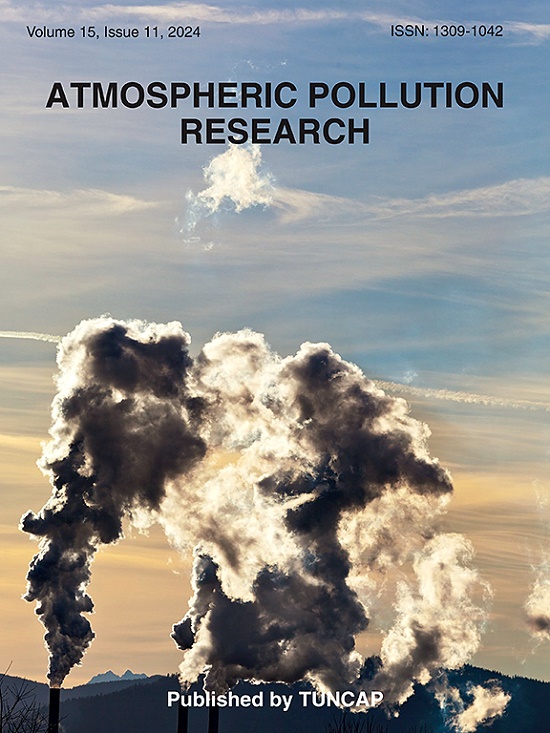基于机器学习的NO2光解速率系数长期重建及其对二次污染的影响——以四川盆地某特大城市为例
IF 3.9
3区 环境科学与生态学
Q2 ENVIRONMENTAL SCIENCES
引用次数: 0
摘要
二氧化氮光解速率系数(JNO2)是评估大气光化学反应强度的关键参数。然而,JNO2 的连续长期测量数据很少。在本研究中,我们开发了一种基于机器学习的方法来重建每小时的二氧化氮浓度值,并将其应用于四川盆地 2015 年至 2023 年的一个特大城市。该模型表现出很强的性能,交叉验证 R2 = 0.854,RMSE = 8.15 × 10-4 s-1。利用夏普利相加解释(SHAP)方法,我们发现太阳活动和污染物水平都是 JNO2 的重要预测因子。我们的长期 JNO2 重建结果表明,JNO2 与臭氧浓度之间存在很强的相关性,这突出了 JNO2 在二次污染中的重要作用。这项研究说明了机器学习在重建每小时二氧化氮数值方面的有效性,为传统模型提供了有价值的改进。这些发现对于了解区域光化学过程以及分析臭氧和气溶胶污染的趋势和原因至关重要。本文章由计算机程序翻译,如有差异,请以英文原文为准。

Long-term reconstruction of NO2 photolysis rate coefficients using machine learning and its impact on secondary pollution: A case study in a megacity of the Sichuan Basin, China
The NO2 photolysis rate coefficient (JNO2) is a critical parameter for assessing the intensity of atmospheric photochemical reactions. However, continuous long-term measurements of JNO2 are scarce. In this study, we developed a machine learning-based method to reconstruct hourly JNO2 values, applying it to a megacity in the Sichuan Basin from 2015 to 2023. The model exhibited strong performance with cross-validation R2 = 0.854 and RMSE = 8.15 × 10−4 s−1. Utilizing the Shapley Additive Explanations (SHAP) method, we identified solar activity and pollutant levels both as significant predictors for JNO2. Our long-term JNO2 reconstructions indicate a strong correlation between JNO2 and ozone concentration, highlighting its important role in secondary pollution. This study illustrates the effectiveness of machine learning in reconstructing hourly JNO2 values, providing a valuable enhancement to traditional models. The findings are crucial for understanding regional photochemical processes and for analyzing trends and causes of ozone and aerosol pollution.
求助全文
通过发布文献求助,成功后即可免费获取论文全文。
去求助
来源期刊

Atmospheric Pollution Research
ENVIRONMENTAL SCIENCES-
CiteScore
8.30
自引率
6.70%
发文量
256
审稿时长
36 days
期刊介绍:
Atmospheric Pollution Research (APR) is an international journal designed for the publication of articles on air pollution. Papers should present novel experimental results, theory and modeling of air pollution on local, regional, or global scales. Areas covered are research on inorganic, organic, and persistent organic air pollutants, air quality monitoring, air quality management, atmospheric dispersion and transport, air-surface (soil, water, and vegetation) exchange of pollutants, dry and wet deposition, indoor air quality, exposure assessment, health effects, satellite measurements, natural emissions, atmospheric chemistry, greenhouse gases, and effects on climate change.
 求助内容:
求助内容: 应助结果提醒方式:
应助结果提醒方式:


